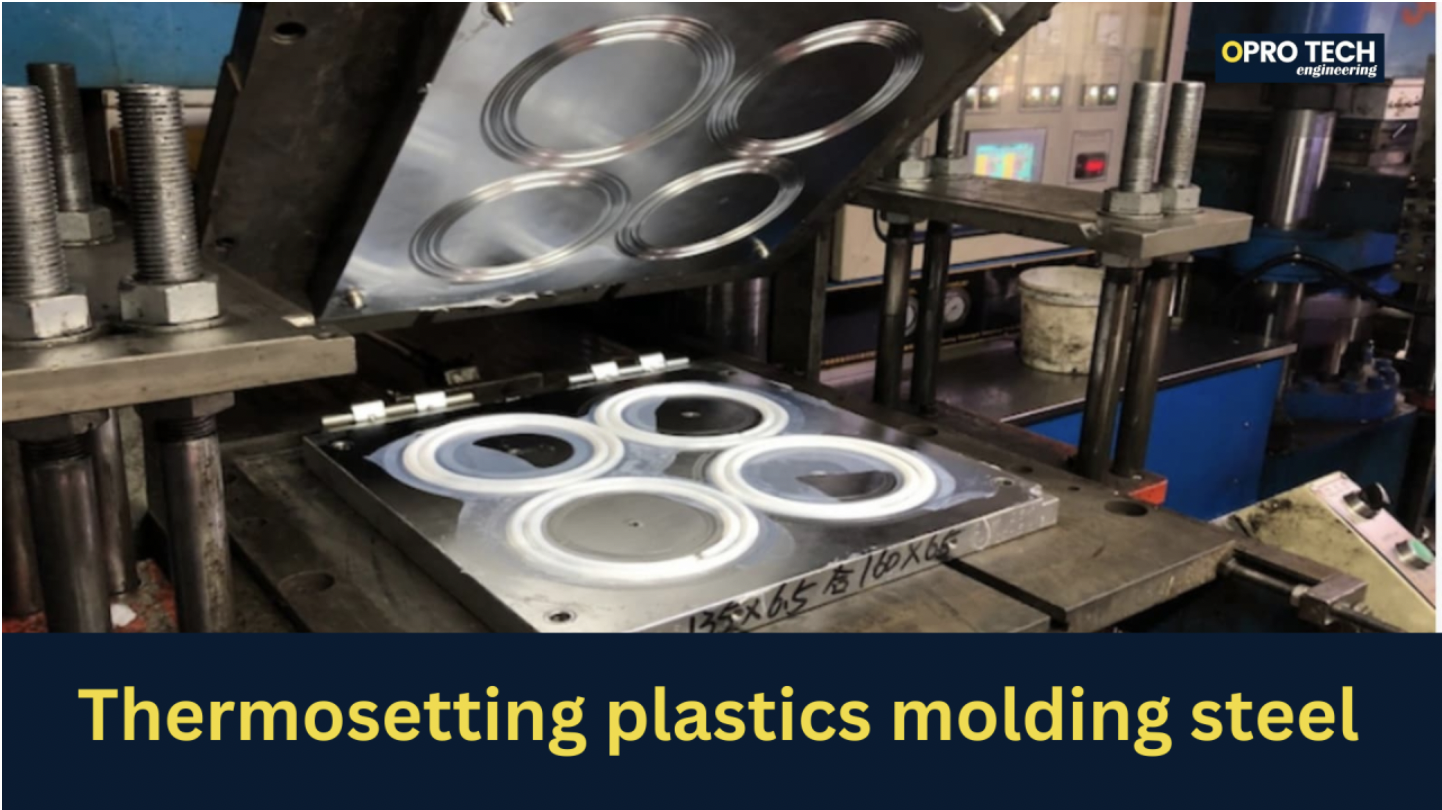What kind of mold steel is better for thermosetting plastics molding?

Molds for thermosetting plastics need to work under high temperature and pressure, which causes significant erosion to the molds.
The molds are prone to erosion, leading to mold flash.
For such thermosetting plastic molds with a large amount of filler, it is best to choose a steel with a higher carbon content, hardness of HRC54 or above (HRC54-60), without carbide segregation, preferably subjected to electric slag remelting, and capable of achieving mirror polishing.
Mold steel must have the following 3 major properties:
First, the carbon content of the mold steel should be high enough to obtain hard carbides after heat treatment for good wear resistance.
For example, H13 or S136, quenched and hardened to HRC50, but the carbon content of such materials is only 0.38%.
With low carbon content, it's difficult to obtain a large amount of hard carbides after heat treatment, and the hardness is only HRC50, resulting in insufficient wear resistance, unable to resist the erosion and abrasion of thermosetting plastics.
Consequently, frictional wear occurs, causing the mold dimensions to shrink, leading to flash.

Secondly, the hardness should reach above HRC54 to resist the erosion and wear of fillers or glass fibers on the mold.
Using high-hardness cold work mold steel, as the hardness can reach HRC55-60, it provides good wear resistance.
However, high-carbon cold work mold steels such as Cr12MoV, D2, SKD11, DC53, have carbide segregation as an inherent defect.
Once carbide segregation occurs in mold steel, numerous microcracks will be present in the structure.
When fillers slide in the mold cavity, they are prone to adhesive wear due to these microcracks, leading to mold sticking, scratching, or pulling off, erosion at gate positions, causing mold flash.

Thirdly, the mold steel should have good uniformity in structure and should not exhibit carbide segregation.
It's preferable if it can be mirror polished.
This ensures that when fillers slide in the mold cavity, they won't encounter microcracks, thus avoiding adhesive wear of materials and preventing mold sticking or scratching.
Mold steels that meet these three major properties include LG, 8503, W360, Viking, HPM31, etc.

Additionally, if these molds are to work in humid environments or environments with acidic substances, or if flame retardants are added to the raw materials, and corrosion resistance and rust prevention are required, then stainless steels such as M316, M340, 440C, or powder metallurgy stainless steels such as ELMAX, M390 can be chosen.
These materials not only resist rust but also achieve a hardness of HRC52-61, providing excellent wear resistance, and can also be mirror polished.
OPRO Tech manufactures various plastic injection molds for diverse markets as such: Electrical items, Automotive, Medical, Electronic Packaging and Agricultural.
These plastic injection mold types include:
- High cavitation mold
- Unscrewing and Collapsible mold
- Over-molding
- Insert-molding
- Structural foam mold
- Blow mold
- Compression mold
